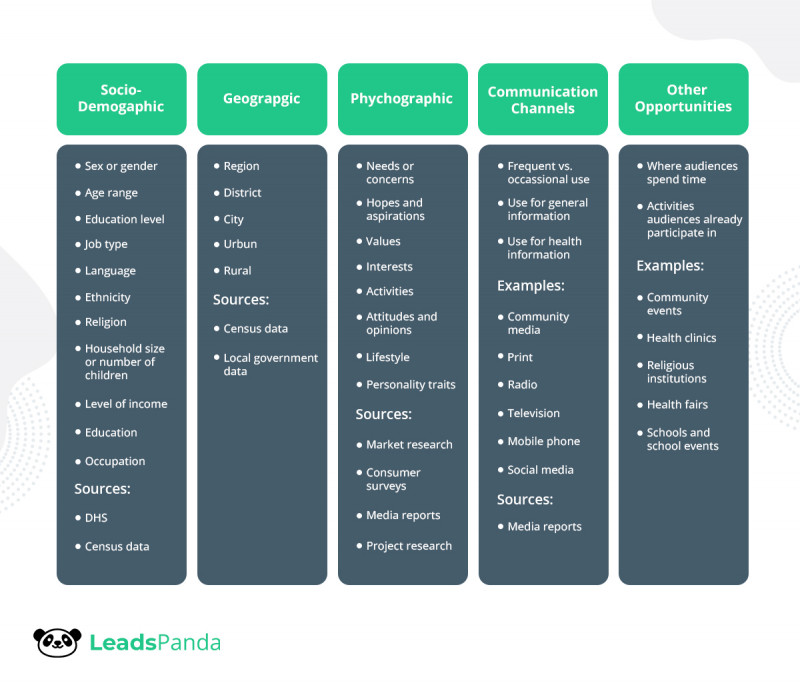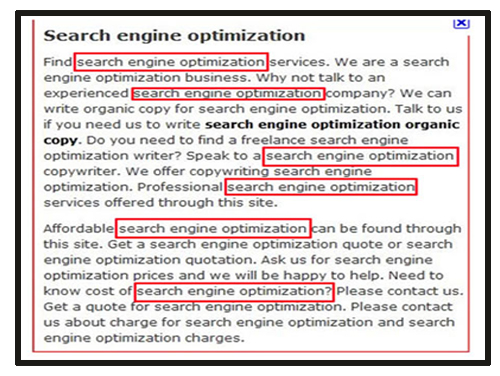Top 6 Content Marketing Mistakes to Avoid
We’re all about creating content and every blog in this niche is about sharing tips and tricks to make the content you produce successful.
What doesn’t get enough attention, though, are the common content marketing mistakes that marketers make as they implement their strategies. As much as you’d like to focus on the great ways to do your jobs as content marketers, you’re also prone to errors that often lead to the failure of campaigns you worked so hard on.
Don’t let all your efforts go to waste. Take note of these content marketing mistakes you should definitely avoid:
1. Not getting to know your audience
Not getting to know your audience is quite possibly the biggest mistake you could make in content marketing.
Knowing your audience is central to any content marketing strategy, especially given the diversity of marketing styles and strategies available today. It’s so easy to lose sight of the fundamentals when you don’t know your audience inside and out. You won’t know what techniques can best communicate with them, what platforms will resonate, what messages will engage them, or how you can nurture them once they become full-fledged customers.

Typical audience profile categories.
Make a real effort to know more about what your audience wants and needs.
- Do your research in advance
- Take a look at your competitors’ audience profile
- Create a customer persona
- Reach out to your customers personally to get to know them
- Monitor reader comments and engagement regularly
- Ask your customers questions
Remember, the goal is to better understand your target demographic so you gain insight into their habits, behaviors, lifestyles, and preferences. From here, you’ll be able to tweak and improve your strategy accordingly.
2. Not identifying your goals
You can’t just produce content for the sake of it. You have to create with purpose so you can improve your content’s overall performance.
Every single piece of content you produce should be working toward a specific or overarching marketing goal. If you don’t identify what these goals are, you’re basically just creating content to fill up your blog—and you’re wasting a lot of time and effort.
Pay attention to what a particular piece of content can do for your brand.
- Can it help you earn valuable links?
- Will it help you educate and inform your audience?
- Can it contribute to social engagement?
- Will it contribute to your SEO efforts?
3. Not creating content for your audience
You already know what your audience wants and needs; you’ve identified their pain points and know what you have to solve, so why wouldn’t you create content specifically to address this?
Draw a clear line between what you think your audience wants to read versus exactly what your audience wants to know.
- Create a connection by making a point to identify shared values and speak openly about them.
- Be helpful and provide useful information that your audience can use. Provide facts, not just opinions.
- Be relatable. Even if your primary goal is to give the reader answers to their questions, it’s OK to let your own personality show. Share anecdotes, include photos and relevant media, and write as if you’re having coffee with a good friend.
4. Not recognizing what your business is actually known for
Do you really know why visitors are coming to your web page? If not, then you might be targeting too many keywords and spreading yourself too thin. More importantly, you might be missing out on key opportunities to promote your brand or business better, which is a huge content marketing mistake.
Remember, different social media, advertising, or marketing platforms can serve various purposes and you might not be leveraging the right ones for your brand.
Ask yourself the following:
- What is your product or service and what is the best way to showcase that?
- What platforms are best suited for you, given your business? For example, visual products are best featured on platforms like Instagram or YouTube. Or is it a mostly business service that would be better served on LinkedIn?
- How can you tailor your service or products to suit the different marketing platforms and reap maximum ROI?
5. Not being careful about how you use keywords
Keyword stuffing used to be a very common content marketing method because it actually worked. Through the years and after many algorithm updates, this was ultimately outlawed by Google and other search engines. Unfortunately, it seems that a lot of content marketers still believe that keyword stuffing is effective.

Example of what copy that uses keyword stuffing. (Image Source)
Keep in mind:
- Keyword stuffing is a black hat SEO tactic that won’t make your page rank higher. If you’re caught, you’re going to end up paying the price. Either your site could suffer lower rankings or be shut down altogether.
- As much as you want to rank on search engines, remember that you have to incorporate keywords into your site organically. Text has to be written naturally to make your SEO efforts effective. Google is very adept at catching content marketers who choose to stuff their pages.
- A search engine’s primary goal is to satisfy user search intent. To satisfy Google, you have to first satisfy the users and make sure that your content can solve their problems.
6. Not diversifying content
Content comes in various formats, but by far, articles and blog posts tend to dominate because of how easy they are to create. While it may be easy to just keep pumping out written content, don’t fall into the trap of churning out the same old content over and over again simply because you don’t have time to create something else.
Understandably, smaller content marketing teams may find it hard to create new types of content, so here are some ideas for using what you have in a fresh way:
- Repurpose old blog posts using Canva to transform them into a video.
- Create infographics using old blog posts—take key phrases from the post and use a template to simplify the design process.
- Use Slideshare to take old blog posts and create shareable visual content.
You put a lot of effort into sharing your expertise in the content you create. So, remember to be strategic about how you share and promote it. If you want to learn more about how to avoid common content marketing mistakes, reach out to us. Book a consultation or get started with Leadspanda to find out how we can help you.
If you have any questions or more ideas on what not to do to improve your content marketing efforts, feel free to comment below or reach out to us via Twitter or LinkedIn.
Share This Story
Get the latest growth ideas, strategies, and best practices delivered to your inbox.
Quick read that helps 7000+ subscribers.








